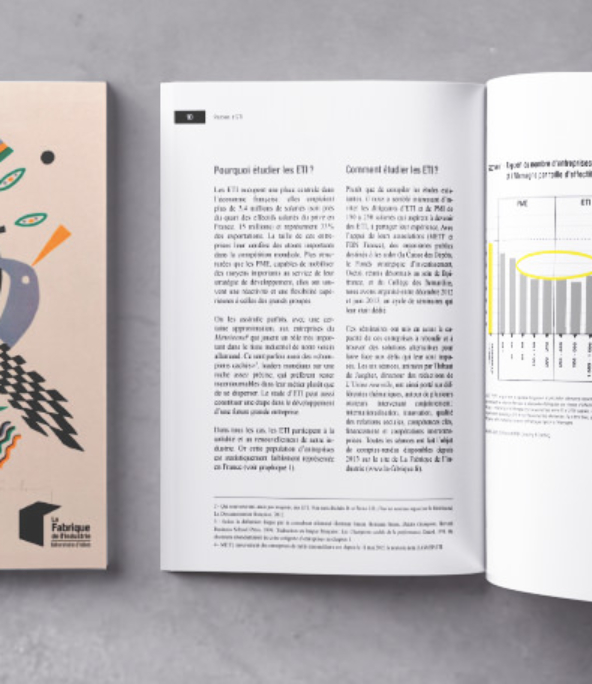Mid-sized businesses share their strategies on how to conquer growth
In drawing attention to what MSBs are really like and how their leaders overcome the obstacles to their growth, the ambition of this book is to contribute to a movement that is crucial to the recovery of our economy, and of our industry in particular.
Why study mid-sized businesses?
A futile clash of ideas in our country opposes those who consider that growth comes above all from creating new businesses, and those who recommend backing major groups because they are the only ones with the capacities for integration and distribution on the global market.
Between the two, mid-sized businesses (MSBs) tend to be completely overlooked. For a long time, MSBs were ignored in statistics, lost somewhere between SMEs and major groups, until they were officially recognized by the law on modernizing the economy of 4 August 2008. Since then, although they have entered the vocabulary of politicians, economic stakeholders and business specialists, the general public is still largely unaware of them. MSBs are often cited as the model that France should follow to move out of recession. The critical size of these companies allows them to innovate, create jobs, employ original social dialogue, export, and act as tomorrow’s leaders. Many observers say their low number, in particular when compared to Germany, is a result of France’s structural difficulties in helping its high-performing businesses grow and develop.
MSBs play a central role in the French economy: they employ over 3.4 million people (almost a quarter of salaried staff in the country’s 15-million-strong private sector) and represent 33% of exports. The size of these companies gives them significant assets in global competition. More structured than SMEs, and capable of mobilizing significant resources for their development strategy, they are often more reactive and flexible than big groups.
Sometimes, they are rather misleadingly compared to Mittelstand companies, which play an important role in the industrial fabric of our German neighbour. At other times, they are the “hidden champions” , global leaders in a fairly precise niche that prefer to remain a benchmark in their domain rather than disperse. An MSB can also be a development stage on the way to becoming a large company in the future. In any case, MSBs play a part in the solidity and renewal of our industry. Yet statistically this group of businesses is little represented in France.
Main conclusions
It is now obvious that the French industrial system could export and innovate more if it included more midsize businesses. France includes some outstanding large groups that are driving forces for our economy. Our country also manifests considerable entrepreneurial initiative, as shown by its fertile business creation and high number of SMEs. However, on the whole, French SMEs still struggle to grow and become MSBs.
Yet it is these businesses that constitute the strength of the German industrial fabric: agile, innovative, exporting, and close to their customers around the world. They are rarely in the front line for major contracts, but they are deeply embedded in the globalization game. MSBs are less numerous in France, where they employ a quarter of private sector workers, but they represent a third of exports, compared to almost twice as much for big companies.
What are the ways to facilitate the growth of SMEs so that they can become MSBs? How can their development then be encouraged to regenerate the industrial fabric? The comments made by business leaders collected in this publication show that there is no miracle recipe or single solution, but that each company has to invent, choose or adapt practices to its specific business context in order to innovate, attract talent, develop staff skills, set out to conquer global markets, and find the financial resources to match its ambitions.
This book looks at the role of directors and their capacity to develop a long-term vision, adapt to new situations, deal with failure, attract reliable partners and mobilize them, and foster peaceful social dialogue. Business leaders also insist on the importance of partnerships with their customers, sub-contractors and local stakeholders to establish growth. This kind of cooperation can, for example, put them a step ahead in terms of innovation, give them a comprehensive view of a value chain, or help them secure a durable foothold in the territory and take advantage of its many networks.
This “collective game” was initiated a long time ago in Germany, but is all too often absent in France. However, thanks to improved awareness of the issues, the situation appears to be improving. The debate on the priorities of industrial policy is at last moving away from a fruitless opposition between major groups, MSBs and SMEs. The idea that prosperous ecosystems are based on a network of complementary stakeholders is gaining ground. Sectoral policies find genuine justification in this complementary system. Order-givers are becoming aware of their role in developing the capacities of their sub-contractors, with which they are entering into more balanced, longer-lasting partnerships, such as sectoral technology roadmaps and co-developments of future products. At the same time, MSBs are discovering the rich potential of partnerships with public research and education establishments.
In drawing attention to what MSBs are really like and how their leaders overcome the obstacles to their growth, the ambition of this book is to contribute to a movement that is crucial to the recovery of our economy, and of our industry in particular.




